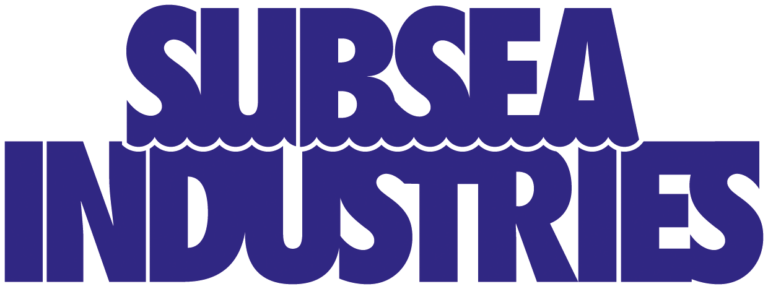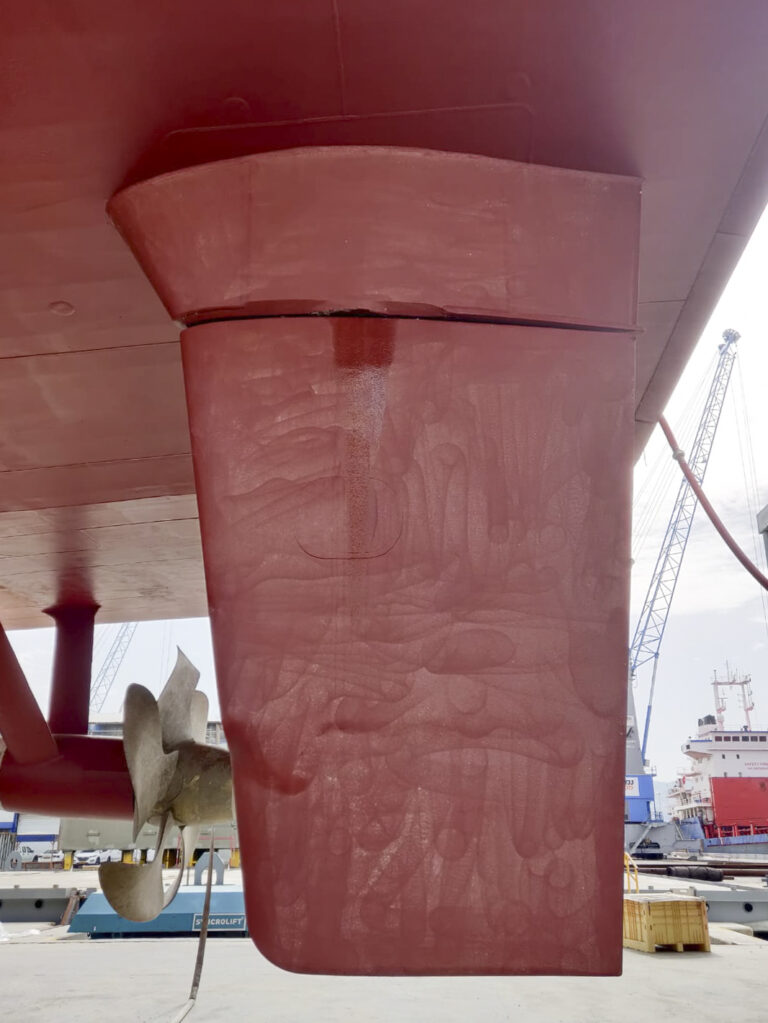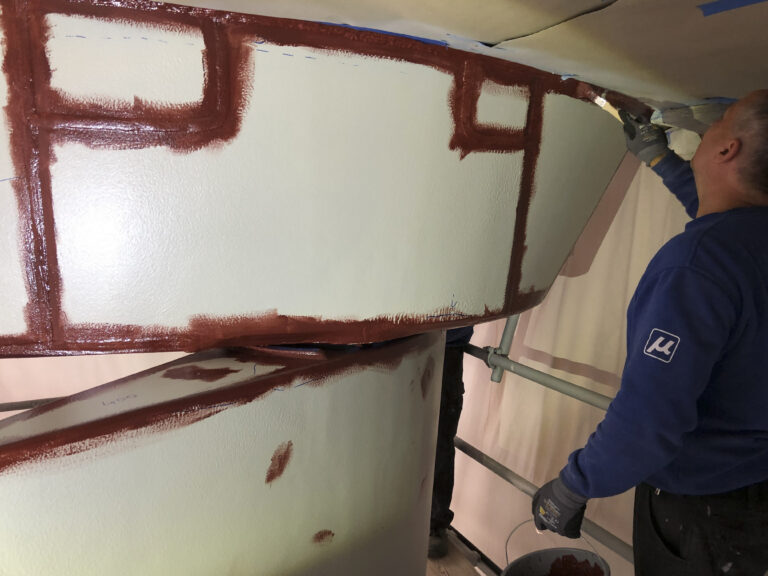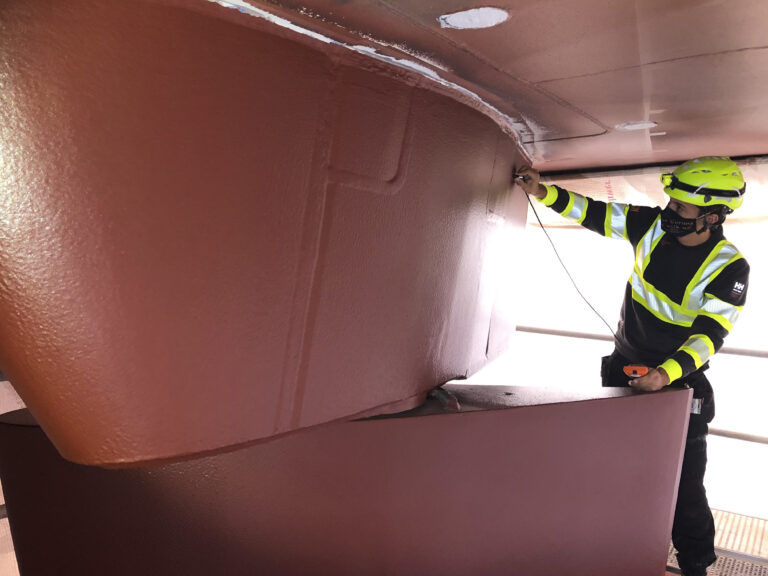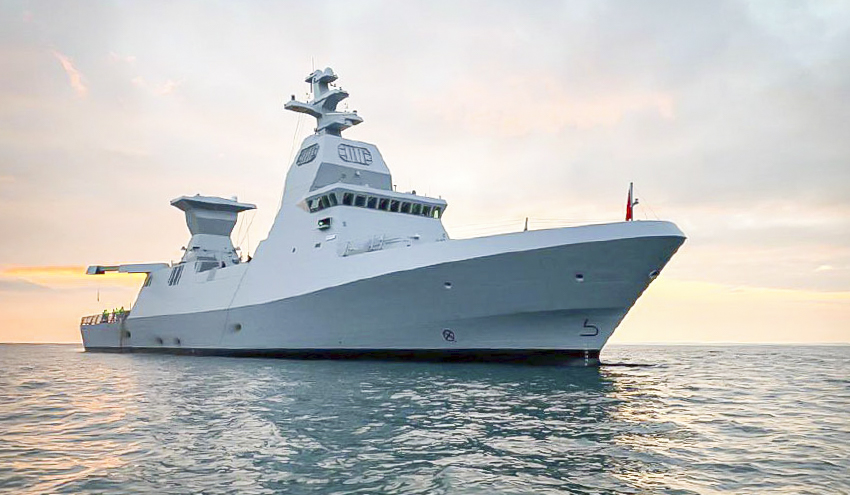(Important Note: This article may not be republished or reproduced in any form without the explicit, in-writing permission of Subsea Industries NV.)
The Israeli Navy turned to Ecoshield for protection of the rudders of four new corvettes. The rudders perform extremely well but are highly prone to cavitation damage. The Israeli Navy did not want to have to modify the rudders in any way for fear of losing speed or maneuverability. The designer of the rudders, Becker Marine, recommended Ecoshield from Subsea Industries to solve the problem.
SA’AR 6 Project
Between 2020 and 2021, the Israeli Navy took delivery of four, new, German-made SA’AR 6-class corvettes. These corvettes were designed specifically to protect Israeli natural gas platforms in the Israeli exclusive economic zone (EEZ) and to defend Israeli shipping lanes in the Mediterranean.
These 90m, 2000-ton corvettes powered by four diesel engines, are capable of a maximum speed of around 26 knots and have a range of 4,000 nautical miles. They are also highly maneuverable as one would expect from a fast, naval craft of this type. They are to date the largest and most heavily-armed warships in the Israeli Defense Forces.
The first of the four ships, the Magen, was commissioned in 2020. This was followed by the Oz, the Atzmaut and the Nitzachon during the following year.
Built for speed and rapid maneuvering, the corvettes have twin propellers and rudders. It is the rudders specifically which are the subject of this article.

Commander Sagy Hakoon is Head of Platform Branch in SA’AR 6 Department of the Israeli Defense Forces, responsible for the technological and logistical support of the SA’AR 6 vessels. He was formerly part of the Naval Architect team of the Israeli Navy stationed in Germany for the designing and building of the ships.
Commander Hakoon provided valuable feedback on the success of Ecoshield on the rudders of the SA’AR-6 corvettes.
Rudder surprise
Commander Hakoon recalls, “We were originally using the same standard anti-fouling paint system for the rudders that was on the rest of the underwater hull: the primer layers were epoxy based, and the top layers were the active anti-fouling system.”
“After the sea trials of the first ship, the Magen, we docked her,” Commander Hakoon continues. “We witnessed severe damage of the coating on the rudder blades. The damage was shocking to everyone, from the shipyard designers, to the rudder blade designers. The reason for the damage was very clear: cavitation phenomena. After some trials we made we saw that the cavitation begins at about 70% of the top speed without maneuvering, and begins even earlier when the rudder blade is not parallel to the ship’s longitudinal direction, in other words, when the vessel maneuvers. The real surprise was that the cavitation was so aggressive that damage to the steel was about to occur after only a few days of sea trials.”
Cathodic protection on the rudder blades themselves was not an option, as Commander Hakoon explains: “The additional drag (geometrical resistance) resulting from the anodes is relatively high, and would reduce the vessel’s maximum speed which is crucial for our Naval vessels. We had assumed anticorrosive paint would be sufficient. But this was not the case.”
“Cathodic protection is not very relevant for the cavitation effect we have on the rudder,” continues Commander Hakoon. “The sacrificial anodes would not last long enough. But I might change my view on this in the future, if we discover that one or two small areas on the rudder continue to suffer from cavitation damage.”
The designers and suppliers of the rudders, Becker Marine, evaluated the situation.
“One solution we had in mind was to replace the rudder blade with a newly-designed one,” says Commander Hakoon. “This would of course require a major retrofit which would have taken a significant amount of time and effort. It was a solution that no one wished to face. First of all, time was very crucial to us. This kind of retrofit would take months if not longer, since a new design of a rudder would be required, and the manufacturing and installation is a lengthy process. We needed to receive the vessels and sail them to Israel to begin the weapon integration. Secondly, the rudders’ performance is very good. They maneuver the vessels excellently and they are not producing drag. If we changed to any other rudder, we would risk losing the high performance we currently have.”
Ecoshield
“We received a recommendation from Becker Marine Company, who designed the rudder blades,” says Commander Hakoon. “After we reported the severe cavitation, they responded that the most efficient way they saw of handling the situation was to protect the rudder with a durable coating for cavitation. Based on their experience, they said Ecoshield from Subsea Industries showed durability and resistance to cavitation.”
The Israeli Navy had never used Ecoshield or Ecospeed coating before. It has now been under evaluation on SA’AR 6 rudder blades beginning with the Magen. Her rudder was coated with Ecoshield in July 2020 in Germany. The rudders of the other three corvettes have subsequently been protected with Ecoshield.
The Magen went into drydock in the spring of 2022 and Commander Hakoon had a chance to check on the results up to that point.
“Overall, it looks very good,” he says. “On ship 1 (the Magen, the flag ship) there are some coating damages, but it is too early to decide what is the main cause since we have also replaced the rudder mechanism, which was causing abnormal vibrations in the rudder blades and magnifying the cavitation. This was remedied during the docking. Not much was required in the way of touch-ups. On ship 1 (the Magen), we had a peeling of the paint on one area, which exposed the bottom layer of two layers of Ecoshield. As mentioned, this may be a result of the vibration magnification of the rudder mechanism, which has now been replaced. Up to now, it looks pretty promising. We need to inspect at the next dockings (2024 and 2025) to finalize our conclusions.
The future
“Now I am looking to the next phase,” says Commander Hakoon. “If everything goes well and the Ecoshield is resilient enough, we would probably only renew the Ecoshield (local repairs for damages, general recoating for wear). If Ecoshield did not work, we would probably have to replace the rudder blades with newly designed ones. If Ecoshield is successful, we might extend it also to the struts of the vessel if needed. We will evaluate after the drydocking surveys on the vessels in the next couple of years.”
“The service from Subsea Industries has been very good. The engineers and the inspector I met in Kiel, Germany during the Ecoshield application on the vessels were very professional. I am sure I will need some more consultations in the future.”
“Our hope is that the use of Ecoshield will enable us to maintain our current drydock maintenance schedule. I am very optimistic.”
(Important Note: This article may not be republished or reproduced in any form without the explicit, in-writing permission of Subsea Industries NV.)
The Israeli Navy turned to Ecoshield for protection of the rudders of four new corvettes. The rudders perform extremely well but are highly prone to cavitation damage. The Israeli Navy did not want to have to modify the rudders in any way for fear of losing speed or maneuverability. The designer of the rudders, Becker Marine, recommended Ecoshield from Subsea Industries to solve the problem.
SA’AR 6 Project
Between 2020 and 2021, the Israeli Navy took delivery of four, new, German-made SA’AR 6-class corvettes. These corvettes were designed specifically to protect Israeli natural gas platforms in the Israeli exclusive economic zone (EEZ) and to defend Israeli shipping lanes in the Mediterranean.
These 90m, 2000-ton corvettes powered by four diesel engines, are capable of a maximum speed of around 26 knots and have a range of 4,000 nautical miles. They are also highly maneuverable as one would expect from a fast, naval craft of this type. They are to date the largest and most heavily-armed warships in the Israeli Defense Forces.
The first of the four ships, the Magen, was commissioned in 2020. This was followed by the Oz, the Atzmaut and the Nitzachon during the following year.
Built for speed and rapid maneuvering, the corvettes have twin propellers and rudders. It is the rudders specifically which are the subject of this article.

Commander Sagy Hakoon is Head of Platform Branch in SA’AR 6 Department of the Israeli Defense Forces, responsible for the technological and logistical support of the SA’AR 6 vessels. He was formerly part of the Naval Architect team of the Israeli Navy stationed in Germany for the designing and building of the ships.
Commander Hakoon provided valuable feedback on the success of Ecoshield on the rudders of the SA’AR-6 corvettes.
Rudder surprise
Commander Hakoon recalls, “We were originally using the same standard anti-fouling paint system for the rudders that was on the rest of the underwater hull: the primer layers were epoxy based, and the top layers were the active anti-fouling system.”
“After the sea trials of the first ship, the Magen, we docked her,” Commander Hakoon continues. “We witnessed severe damage of the coating on the rudder blades. The damage was shocking to everyone, from the shipyard designers, to the rudder blade designers. The reason for the damage was very clear: cavitation phenomena. After some trials we made we saw that the cavitation begins at about 70% of the top speed without maneuvering, and begins even earlier when the rudder blade is not parallel to the ship’s longitudinal direction, in other words, when the vessel maneuvers. The real surprise was that the cavitation was so aggressive that damage to the steel was about to occur after only a few days of sea trials.”
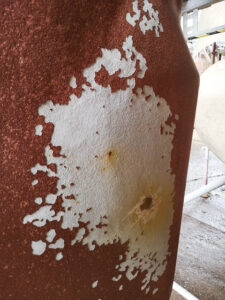
Cathodic protection on the rudder blades themselves was not an option, as Commander Hakoon explains: “The additional drag (geometrical resistance) resulting from the anodes is relatively high, and would reduce the vessel’s maximum speed which is crucial for our Naval vessels. We had assumed anticorrosive paint would be sufficient. But this was not the case.”
“Cathodic protection is not very relevant for the cavitation effect we have on the rudder,” continues Commander Hakoon. “The sacrificial anodes would not last long enough. But I might change my view on this in the future, if we discover that one or two small areas on the rudder continue to suffer from cavitation damage.”
The designers and suppliers of the rudders, Becker Marine, evaluated the situation.
“One solution we had in mind was to replace the rudder blade with a newly-designed one,” says Commander Hakoon. “This would of course require a major retrofit which would have taken a significant amount of time and effort. It was a solution that no one wished to face. First of all, time was very crucial to us. This kind of retrofit would take months if not longer, since a new design of a rudder would be required, and the manufacturing and installation is a lengthy process. We needed to receive the vessels and sail them to Israel to begin the weapon integration. Secondly, the rudders’ performance is very good. They maneuver the vessels excellently and they are not producing drag. If we changed to any other rudder, we would risk losing the high performance we currently have.”
Ecoshield
“We received a recommendation from Becker Marine Company, who designed the rudder blades,” says Commander Hakoon. “After we reported the severe cavitation, they responded that the most efficient way they saw of handling the situation was to protect the rudder with a durable coating for cavitation. Based on their experience, they said Ecoshield from Subsea Industries showed durability and resistance to cavitation.”
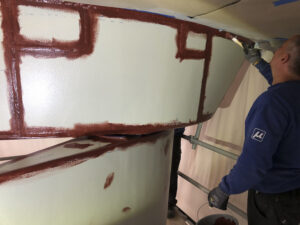
The Israeli Navy had never used Ecoshield or Ecospeed coating before. It has now been under evaluation on SA’AR 6 rudder blades beginning with the Magen. Her rudder was coated with Ecoshield in July 2020 in Germany. The rudders of the other three corvettes have subsequently been protected with Ecoshield.
The Magen went into drydock in the spring of 2022 and Commander Hakoon had a chance to check on the results up to that point.
“Overall, it looks very good,” he says. “On ship 1 (the Magen, the flag ship) there are some coating damages, but it is too early to decide what is the main cause since we have also replaced the rudder mechanism, which was causing abnormal vibrations in the rudder blades and magnifying the cavitation. This was remedied during the docking. Not much was required in the way of touch-ups. On ship 1 (the Magen), we had a peeling of the paint on one area, which exposed the bottom layer of two layers of Ecoshield. As mentioned, this may be a result of the vibration magnification of the rudder mechanism, which has now been replaced. Up to now, it looks pretty promising. We need to inspect at the next dockings (2024 and 2025) to finalize our conclusions.

The future
“Now I am looking to the next phase,” says Commander Hakoon. “If everything goes well and the Ecoshield is resilient enough, we would probably only renew the Ecoshield (local repairs for damages, general recoating for wear). If Ecoshield did not work, we would probably have to replace the rudder blades with newly designed ones. If Ecoshield is successful, we might extend it also to the struts of the vessel if needed. We will evaluate after the drydocking surveys on the vessels in the next couple of years.”
“The service from Subsea Industries has been very good. The engineers and the inspector I met in Kiel, Germany during the Ecoshield application on the vessels were very professional. I am sure I will need some more consultations in the future.”
“Our hope is that the use of Ecoshield will enable us to maintain our current drydock maintenance schedule. I am very optimistic.”
